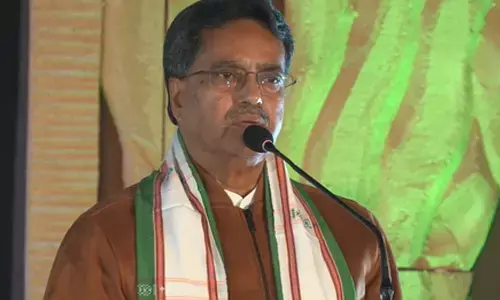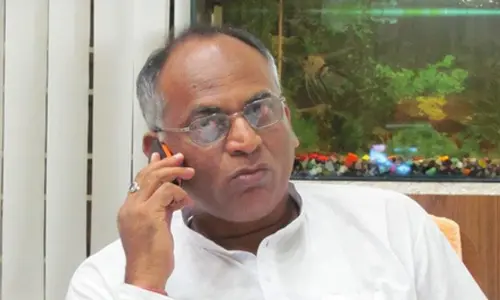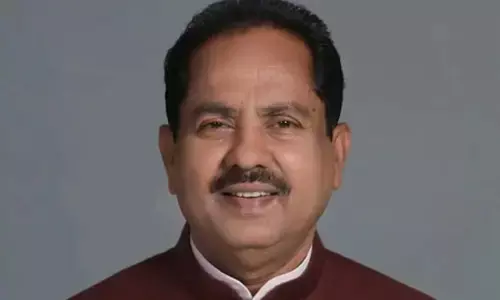India’S Contrived ‘Growth’ Story

Is GDP a genuine indicator of growth and development?
A sham is played out to link GDP with socio-economic progress. There are many pointers which nail the justification of using GDP criteria - be it nominal or real GDP - to indicate a country’s development. Applying current prices to calculate GDP – sans inflation - is considered more convenient since a long-period comparative evaluation may not ensure the hyperbolic picture of GDP growth
Theoft-hyped GDP-based claims of India being one of the fastest growing economies in the world can at best be described as a red herring to camouflage the existent scenario. India has the potential to become a $5 trillion economy, but using this metric to present an overall growth narrative is farcical and flawed.
GDP provides an annual cumulative valuation of public consumption, output of goods and services, government spending, private investments and export earnings in the country. While GDP can be a crucial yardstick for providing a comprehensive picture of the status of economy, its positives cannot be a reflection of the realistic development of the country.
GDP is not reflective of access, or lack of it, to even basic essentials for livelihood – forget about luxuries - for a majority of the populace in the country.
India is ranked 134 in Human Development Index (HDI). According to United Nations Development Programme (UNDP), HDI combines indicators of health, education, and income to provide a broader measure of human well-being. It considers factors such as life expectancy, education attainment, and gross national income per capita.
Both the government and the so-called economists and renowned consulting firms analyse the course of the economy and flaunt growth projections, on the basis of GDP, despite its inherent deficiencies. In fact, there is no rationale in linking GDP growth rate to development. A sham is played out to link GDP with socio-economic progress. There are many pointers which nail the justification of using GDP criteria - be it nominal or real GDP - to indicate a country’s development. Applying current prices to calculate GDP – sans inflation - is considered more convenient since a long-period comparative evaluation may not ensure the hyperbolic picture of GDP growth.
For instance, India’s GDP has increased by over $1trillion – Rs 83 lakh crore from $2 trillion – over Rs 167 lakh crore in 2014 to over $3 trillion – around Rs 250 lakh crore – in 2024, which is being flaunted as a growth story. But these figures have been arrived at without comparing the prevalent prices in 2014 and 2024. The Real GDP valuation for 2023-24 at Constant (2011-12) Prices is estimated to be Rs. 172.90 lakh crore
Logically, a comparative valuation of the products’ and services’ prices in 2014 and over the decade till date in 2024 would have indicated a much lower GDP growth percentage. For instance, a product which was priced at Rs.100 in 2023 would be costing around Rs.150 in 2024. Similarly the cost of manufacturing a product in 2023 could be five times higher than that in 2024. GDP will increase by Rs.50 for the first mentioned product, and by ten times in the second product in 2024 compared to 2023.
Moreover, one important metric that that is not factored in – deliberately or out of ignorance is the fact that even in the case production becoming stagnant or coming to a halt due to increase in manufacturing costs or other reasons – the GDP continues to remain dynamic indicate an upward trend despite the stagnation in output or the product remaining unsold and being rolled over to the next year. The reason for this paradox is not hard to fathom. For example, the price of these products may increase due to market demand or other factors like increased taxes, inflation, etc.
Accordingly, it is inevitable, that GDP seldom reflect a downward trend, since, price differentials and inflationary factors are avoided in the calculations.
There are many loopholes in the GDP evaluation process. Most conspicuous among the flaws is its focus on macroeconomic evaluation. Second major deficiency is its lack of a proper evaluation of the demand-supply relationship. The GDP does not provide answers to the demand-supply gap. Does the GDP include unsold products which are not in demand, and, evaluate them as an output? Or does it go by the price tag of the product and include them in the calculations?
A case in point case in its favor is that high GDP can churn out higher revenues for the government in the form of taxes which in turn means more money in the country’s coffers for investment on development programmes. GDP can perhaps reflect the status of the various sectors of economy and facilitate the planning process accordingly. But apart from these positives, it is ridiculous to showcase GDP figures as conclusive evidence of growth and performance. There are many other factors that economists and policy makers have preferred to ignore or failed to discern, which break the myth about GDP being the only parameter to gauge a country’s progress. This point of view is substantiated by the fact that the GDP does not reflect an equitable and inclusive portrayal of consumption.
For instance consider this glaring aberration in India’s GDP calculations. An estimated 20% - i.e., around 25 crore of India’s population is below the poverty line (BPL) with each person surviving on Rs.35 per day which works out to Rs. 13,020 per year. Going by these calculations the cumulative total spend by the entire BPL population could be an estimated Rs.1,84,331 crore which is around 2% of the total GDP of over Rs.240 lakh crore. In terms of Purchasing Power Parity PPP, the individual income of those below the poverty line, i.e. Rs. 13,020 is around 5.7% of the India’s per capita GDP of Rs. 2,27,760.
Does this consumption depict equity, inclusivity, and decent standard of living, does it? The objective of presenting a hunky dory picture can be achieved by the addition of spends on luxuries by the highest and higher income groups which can be much more than the expenditures on essentials by the lower and middle income groups. But such facts get obfuscated in the miasma of combinations and permutations that go into the compilation of a convoluted depiction of the economy. If the objective of the government is to project higher standards of living and improvement in the quality of life, the substantial GDP often contrived by it lacks substance to indicate any such development. How does this imply growth and performance? Can these parameters be applied for assessment of India’s overall economic status?
For example, If a large chunk of the population comprising lower and middle income groups can afford to spend 4 lakh crore of the private consumption and a small segment accounts for Rs. 3 lakh crore, then the total sum of all these spends in all probability could indicate higher standard of living and would jack up the per capita GDP. Whether such a permutation can reflect economic growth and performance is debatable. Apart from consumption, the other component of the GDP i.e., government spending is also considered as providing the impetus for progress. According to the government, spending is directly proportional to growth. This could probably be the case, if the priorities and allocations match the requirements. If GDP is an indicator for growth, how is it that many social sectors, comprising education, health, food security, and, poverty sectors are in a debilitated state? Can the economists and policy makers explain the country’s ranking of 103 and ‘serious hunger’ categorization of India. India has the dubious distinction of being high on the multi-dimensional poverty index. Can the GDP figures explain the absolutely neglected state of education in the country? Is there an explanation for industrial performance indices plummeting to abysmal depths? Is GDP an answer and solution to laggard exports and much required import substitution?
If the answer is in the government spending on these sectors as contained in the GDP, then the actual picture reflects that these allocations have failed to trigger both economic and HDI growth factor. It is high time India’s politicians, economists and policy makers stop harping on the GDP and fabricating illusions of grandeur of growth.
( THE WRITER IS SENIOR PRINT, ELECTRONIC AND DIGITAL MEDIA JOURNALIST)














